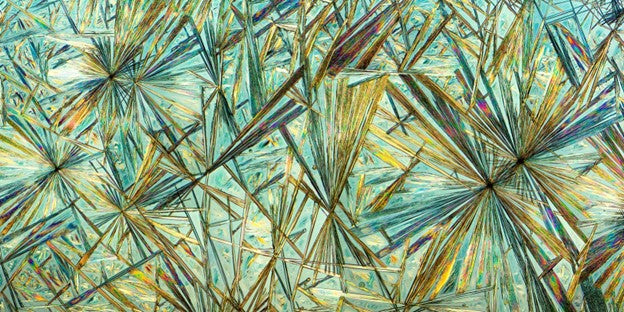In a world where achieving balance and well-being is paramount, it is intriguing to uncover the hidden secrets held by gemstones. These exquisite treasures not only adorn us but also possess a profound potential to promote healing and enhance our overall wellness. In this article, we will delve into the fascinating world where gemstones, cultural influences, historical significance, and scientific research converge, shedding light on the profound impact gemstone jewelry can have on our well-being.
The Ancient Wisdom of Gemstone Healing
The healing properties of gemstone jewelry have been recognized and utilized by various cultures for centuries. Ancient civilizations have embraced the belief that gemstones possessed unique energetic qualities that could harmonize the body, mind, and spirit. These civilizations attributed specific meanings and powers to different gemstones, integrating them into their daily lives, rituals, and holistic healing practices.
Cultural and Historical Influences on Gemstone Healing
Egyptian Influence: The Egyptians adorned themselves with gemstone jewelry not only for its beauty but also for its perceived metaphysical properties. Lapis Lazuli, with its deep blue hue, was treasured for its association with spiritual enlightenment and wisdom. It was often used in amulets and burial rituals to protect and guide the departed.
Greek Influence: The Greeks revered gemstones and believed in their ability to influence physical and mental well-being. Amethyst, a purple quartz, held a special place in Greek mythology and was associated with clarity of thought and protection against intoxication. It was commonly worn as a talisman to ward off negative energies and promote a clear mind.
Chinese Influence: Traditional Chinese medicine incorporates the use of gemstone jewelry to restore the body's balance and optimize energy flow. Jade, a stone deeply revered in Chinese culture, is believed to bring good luck, harmony, and longevity. It is often worn as a symbol of protection and to attract positive energies.
Indian Influence: Gemstone healing has a rich history in ancient Indian traditions, particularly in Ayurveda and Vedic astrology. Ayurveda, the traditional Indian system of medicine, associates gemstones with specific planetary energies and considers them beneficial for balancing the body and mind. For example, Yellow Sapphire is believed to enhance wisdom and prosperity, while Coral is associated with vitality and courage. In Vedic astrology, gemstones are prescribed based on an individual's birth chart to support overall well-being and mitigate planetary influences.
Native American Influence: Various Native American tribes hold deep spiritual connections with gemstones and incorporate them into their healing practices. For example, turquoise is highly regarded by many tribes and is believed to bring protection, harmony, and good fortune. It is often used in jewelry and ceremonial objects to promote spiritual well-being and connection with the natural world.
Tibetan Influence: Tibetan culture places great importance on gemstone healing and its connection to the chakra system. Tibetan Buddhism emphasizes the use of gemstone beads, such as turquoise and coral, in prayer beads (malas) and rituals. These gemstones are associated with specific energy centers (chakras) and are believed to support meditation, balance energies, and cultivate spiritual growth.
Ancient Mesopotamian Influence: Mesopotamian civilizations, such as the Sumerians and Babylonians, valued gemstones for their metaphysical properties. They believed that gemstones were gifts from the gods and possessed powerful healing and protective qualities. They used gemstones in amulets, seals, and jewelry to ward off evil spirits, promote fertility, and enhance physical and emotional well-being.
European Influence: During the Middle Ages, gemstone healing was prevalent in European cultures. The use of gemstones, known as "lapidary medicine," was guided by the belief that gemstones had specific medicinal properties. For instance, Amethyst was thought to prevent intoxication and promote mental clarity, while Emerald was believed to have a positive impact on vision and the heart.
These cultural influences offer a glimpse into the diverse and intricate tapestry of gemstone healing practices worldwide. It is important to note that this is not an exhaustive list of specific beliefs and that practices may vary within each culture.
Scientific Insights into Gemstone Healing
Scientific exploration of gemstone healing is a burgeoning field, aiming to uncover the mechanisms behind the potential impact of gemstone jewelry on our well-being. While more research is needed, several studies have shed light on the possible scientific explanations for their effects.
Crystal Lattice Resonance: One scientific perspective suggests that gemstone healing may be attributed to the unique crystal lattice structure of gemstones. The regular arrangement of atoms in crystals creates a stable and orderly electromagnetic field. It is proposed that when gemstones come into contact with the body, their electromagnetic vibrations may interact with the body's electromagnetic field, potentially influencing the energy flow and promoting balance.
Piezoelectric Effect: Certain gemstones, such as Quartz, exhibit the piezoelectric effect, which means they generate an electric charge when subjected to mechanical pressure. This phenomenon has been utilized in various technologies, including watches and electronic devices. It is speculated that when worn as jewelry or placed in direct contact with the skin, gemstones exhibiting the piezoelectric effect may generate subtle electrical currents that could have a stimulating or harmonizing effect on the body's energy systems.
Color Psychology: The field of color psychology suggests that colors can have a profound impact on human emotions, mood, and well-being. Gemstones come in a spectrum of colors, and each hue is associated with specific psychological and physiological responses. For example, blue gemstones like Aquamarine and Blue Lace Agate are thought to promote calmness and tranquility, while red gemstones like Garnet and Ruby are believed to energize and stimulate vitality. By wearing gemstones of particular colors, individuals may experience corresponding psychological and emotional effects.
Placebo Effect and Mind-Body Connection: The placebo effect is a well-documented phenomenon in medical research, where a person experiences a perceived improvement in their condition due to belief or expectation rather than the specific properties of a treatment. In the context of gemstone healing, the placebo effect may contribute to the reported benefits. Additionally, the mind-body connection plays a significant role in well-being. When individuals believe in the healing potential of gemstone jewelry and actively engage with it, they may experience a positive psychological and physiological response, influencing their overall well-being.
Personal Experiences and Anecdotal Evidence
Beyond scientific research, countless individuals have shared their personal experiences and the transformative power gemstone jewelry has had on their overall well-being. These anecdotal accounts serve as a testament to the profound effects gemstone jewelry can have on our physical, emotional, and spiritual selves.
Gemstone jewelry is not merely an accessory but a bridge to ancient wisdom, cultural influences, and scientific exploration. Drawing from the depths of history and cultural beliefs, gemstone jewelry carries with it a rich tapestry of healing potential. While scientific research continues to unravel the mysteries behind their effects, the personal experiences and cultural significance associated with gemstone jewelry serve as a reminder of its enduring power to enhance our holistic well-being.

